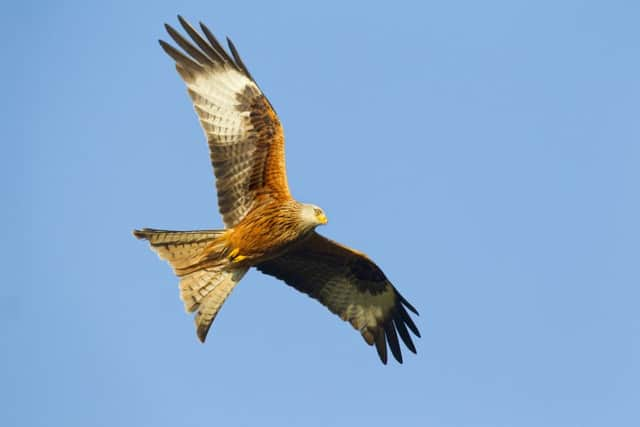Red Kites still facing threats


Nearly a year since it was confirmed the birds were poisoned in Banbridge the RSPB NI has called on the public to help build a clearer picture of the country’s Red Kite population.
Amy Colvin from RSPB NI, said: “Poisoning has been a real challenge of the project. It is hard to tell if its accidental or confirmed and thankfully there has been no confirmed cases since last summer.
Advertisement
Hide AdAdvertisement
Hide Ad“We’ve put a lot of work into education by visiting schools and land owners to explain they are not a threat.”
Red Kites are birds of prey which were persecuted to extinction more than 200 years ago as people mistakenly saw them as a threat to livestock.
However, back in 2008 the conservation charity joined forces with the Welsh Kite Trust and the Golden Eagle Trust to reintroduce the species to Northern Ireland’s skies.
Over two years, dozens of young Red Kites were released into County Down and every year since 2010 these re-located Kites have produced their own chicks.
Advertisement
Hide AdAdvertisement
Hide AdThe current population is thought to stand at around 14 breeding pairs and although no further releases are planned, it’s vital the charity continues to monitor the population until its’ at a sustainable level - estimated to be around 50 pairs.
While County Down remains a hot-spot, Red Kites have been seen all over Northern Ireland as far away as Fermanagh.
With a dedicated team of 12 volunteers, RSPB NI is carrying out detailed on-the-ground monitoring but the more eyes are needed.
Claire Barnett from RSPB NI said: “People will be able to easily identify Red Kites with their rusty-red colouring, forked tail, white patches under each wing and inky black wing tips, not to mention their five-and-a-half-feet wingspan.
Advertisement
Hide AdAdvertisement
Hide Ad“While they are the largest bird of prey to nest in Northern Ireland, Kites are opportunistic scavengers, feeding mostly on worms and small dead animals and aren’t a threat to livestock or people.”
To report a sighting, please email [email protected].
Sightings where wing tags are read are most helpful but even sightings of untagged kites, are also extremely useful.